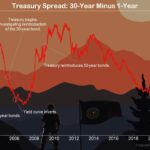
By 2jenn @ Shutterstock.com
You read in these pages (read here, here, here, here, and here for starters) how you can end up paying twice for investments. The first charge is the mutual fund or ETF expenses like the expense ratio (and god forbid 12b-1 fees and other loads). Then there is the fee investors pay to their advisers.
All in all, it can add up to more than two percent a year. It’s like ordering a Happy Meal and paying the guy in front of you to place your order. You can do better than that.
Now, many advisers are taking their clients’ money to invest in “model portfolios.” Dawn Lim reports for The Wall Street Journal:
Assets in model portfolios hit a record high this fall, reflecting growing interest in preset investment options developed by Wall Street firms.
Data provider Broadridge Financial Solutions estimates that model portfolios held $4.1 trillion of assets in September, up from $3.5 trillion at the end of 2019.
Model portfolios are ready-made fund combos delivered through financial advisers and brokerages to everyday investors. There is no ready definition of a model portfolio. But the typical adviser using model portfolios is doing the equivalent of serving a store-bought pie, rather than baking one special from scratch.
The portfolios come in all shapes and sizes and are today surging in popularity as advisers seek quick ways to invest client money. A portfolio might use a classic investment formula of 60% in equity strategies and 40% in bond funds split between a dozen funds, for instance, or use algorithms to dynamically shift the funds it invests in as markets change.
“Model portfolios take some of the human emotion out of investing,” said Andrew Guillette, a research director at Broadridge. “They provide the comfort of science.”
Model portfolios are the latest example of the growing influence of bundled financial products on modern markets. Financial advisers typically use model portfolios to meet investors’ goals quickly, rather than building a portfolio specifically for that person. They can sometimes override the preset investments.
In the Covid-19 pandemic, advisers have used them to whip up portfolios to allow them to deal with more-pressing issues for clients—such as emergency or estate planning.
The models’ rise follows a decadelong transformation of Wall Street. Index funds that mirror markets and robo advisers that automate advice lowered the cost of investing. Human advisers were under pressure to provide cheaper services. Some moved to offering fee-based portfolios filled with low-cost funds—rather than giving priority products that would bring commissions.
Cheap exchange-traded funds provide abundant building blocks for models. Some asset managers jumped into models as a way to distribute their own funds in bulk.
Action Line: Find an investment counsel who isn’t simply collecting your assets to charge a middleman fee and ship them off to a computer-driven model for management. You want the person managing your investments to choose them because they’re a good fit for your plan, and who will be there to explain them and work with you to achieve your investment goals.
E.J. Smith - Your Survival Guy
Latest posts by E.J. Smith - Your Survival Guy (see all)
- This Is about Your Survival, Not Anyone Else’s - April 17, 2024
- The Grid Pushed to Its Limits - April 17, 2024
- Your Retirement Life: Newport Is Buzzing - April 17, 2024
- “Happy I Found Richard C. Young’s Intelligence Report” - April 16, 2024
- Residents Lose Faith in Blue Cities - April 16, 2024














